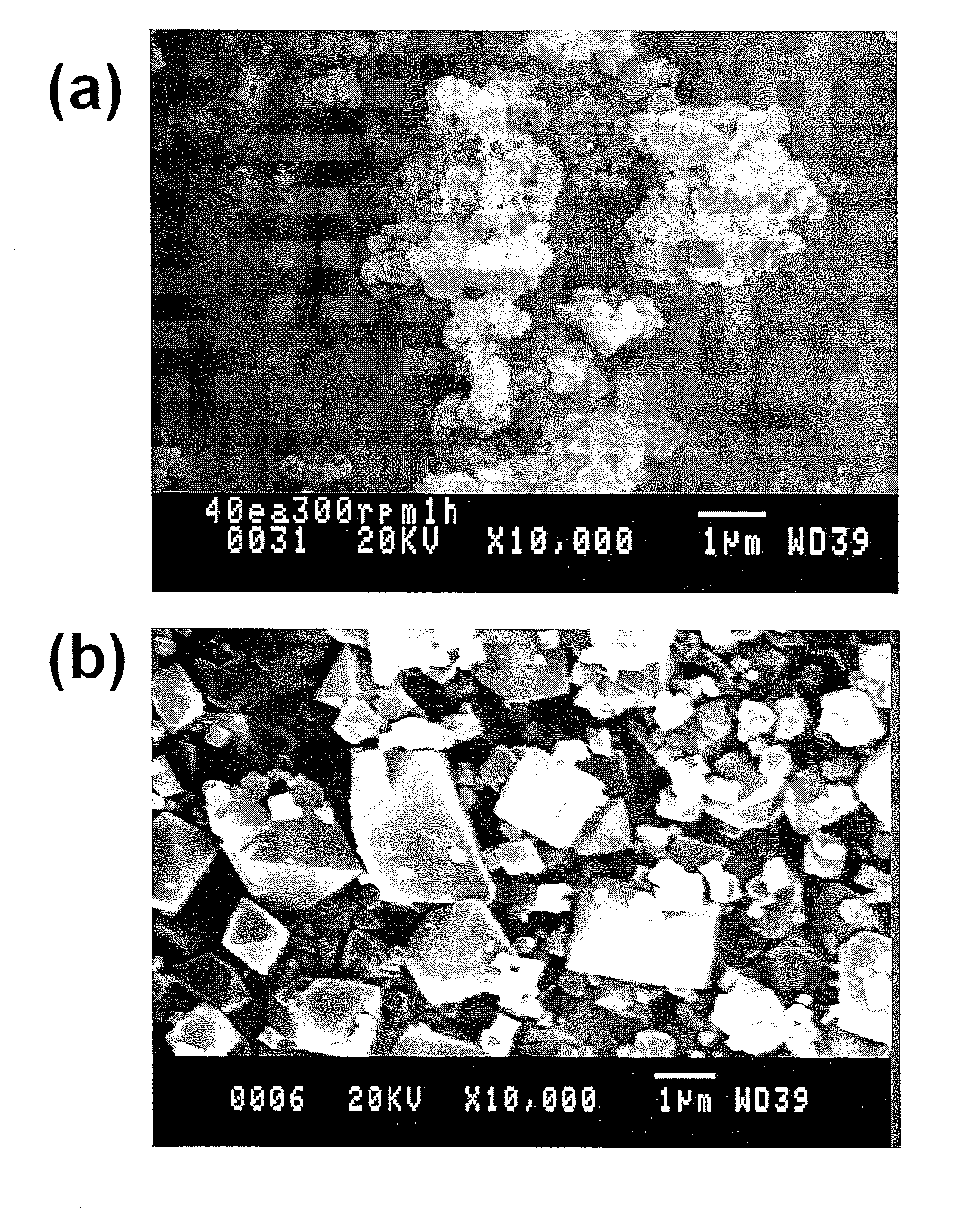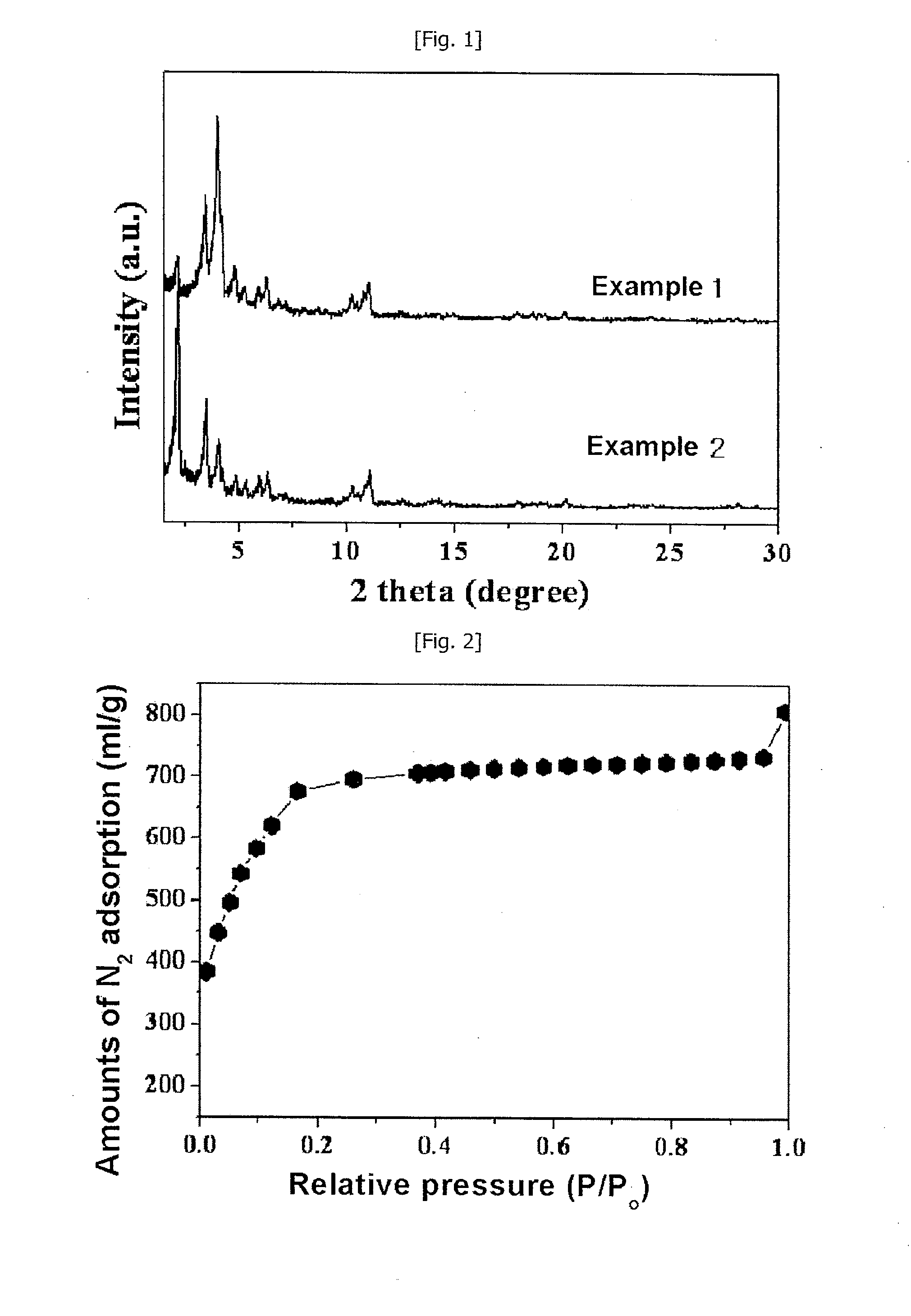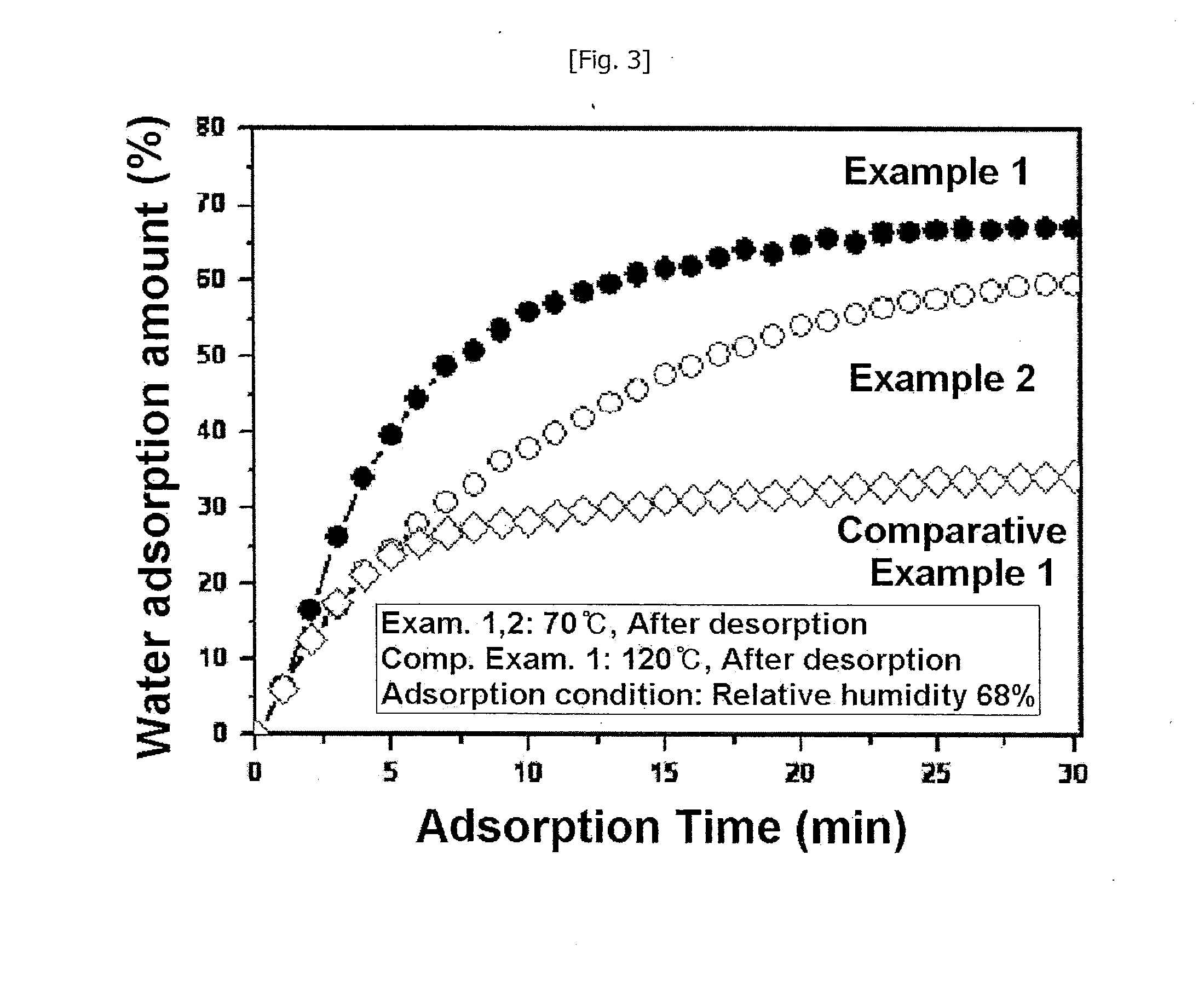Porous organic-inorganic hybrid materials and adsorbent comprising the same
a technology adsorbents, which is applied in the direction of iron organic compounds, silicon organic compounds, leno-woven fabrics, etc., can solve the problems of difficult desorption, high operating cost, and limited use of organic-inorganic hybrid materials, and achieve excellent desorption amount properties, large adsorption amount of water, and the effect of reducing the cost of operating such equipmen
- Summary
- Abstract
- Description
- Claims
- Application Information
AI Technical Summary
Benefits of technology
Problems solved by technology
Method used
Image
Examples
example 1
Preparation of Porous Organic-Inorganic Hybrid Material(s) (Fe-BTC) by Microwaves Irradiation
[0077]After adding metallic iron 1 mmol, 1M HNO3 60 ml, 5M HF (aqueous solution) 40 ml and 1,3,5-benzenetricarboxylic acid (BTCA) 7 mmol to a Teflon reactor, distilled water was added. The final molar ratio of the reaction material was Fe:HF:HNO3:BTCA:H2O=1:2:0.6:0.7:278. The mixed reaction material was stirred in 500 rpm for 20 minutes at room temperature to make the reaction material as homogeneous as possible. After mounting the Teflon reactor containing said pre-treated reaction material on a microwaves reactor (CEM company, model Mars-5) and then raising the temperature to 200° C. by irradiating microwaves (2.54 GHz), crystallization was performed by maintaining the reaction material at 200° C. for 2 minutes. Then, the reaction material was cooled to room temperature, centrifuged, washed with distilled water and dried to obtain a porous organic-inorganic hybrid material(s) (Fe-BTC). The...
example 2
Preparation of Porous Organic-Inorganic Hybrid Material(s) (Fe-BTC) by Electric Heating
[0079]A porous organic-inorganic hybrid material(s) was prepared by the same method as Example 1, except that the organic-inorganic hybrid material(s) was prepared by heating for 144 hours by electric heating using the conventional Convection oven instead of irradiating microwaves as a heat source. As a result of XRD analysis, it can be confirmed that relative intensity of the peak was different; however, a diffusion pattern was shown in the same position as Example 1 as for the crystal structure of the organic-inorganic hybrid material(s) prepared as above. As a result of nitrogen adsorption experiment, it showed a BET surface area of 1,820 m2 / g and a pore volume of 0.9 ml / g.
experimental example 1
Water Adsorption Test
[0082]After vacuum drying the adsorbent obtained from Examples 1 & 2 at 70° C. for 30 minutes, a water adsorption test was performed by the gravimetric method (FIG. 3). Even at a relative humidity of 68%, the water adsorption amount per weight of the adsorbent was 0.67 g / g Example 1, and 0.59 g / g in Example 2.
[0083]Compared with zeolite Y used as the commercial water adsorbent of Comparative Example 1, as a result of performing the water adsorption test in the same manner after vacuum drying zeolite Y at 200° C. for 30 minutes, the water adsorption amount was 0.35 g / g (FIG. 3). That is, although the desorption temperature of the adsorbent of the example was 70° C., the adsorbent of the present invention showed a water adsorption amount that is at least 1.6 times larger.
[0084]Also, the adsorbent of Example 1 prepared by using microwaves showed an adsorption amount of 0.4 g / g after the first 5 minutes, and 0.56 g / g after 10 minutes, whereas the adsorbent of Compar...
PUM
| Property | Measurement | Unit |
|---|---|---|
| temperature | aaaaa | aaaaa |
| temperature | aaaaa | aaaaa |
| temperature | aaaaa | aaaaa |
Abstract
Description
Claims
Application Information
 Login to View More
Login to View More - R&D
- Intellectual Property
- Life Sciences
- Materials
- Tech Scout
- Unparalleled Data Quality
- Higher Quality Content
- 60% Fewer Hallucinations
Browse by: Latest US Patents, China's latest patents, Technical Efficacy Thesaurus, Application Domain, Technology Topic, Popular Technical Reports.
© 2025 PatSnap. All rights reserved.Legal|Privacy policy|Modern Slavery Act Transparency Statement|Sitemap|About US| Contact US: help@patsnap.com



